-
Posts
1,897 -
Joined
-
Last visited
-
Days Won
18
Content Type
Profiles
Forums
Gallery
Downloads
Articles
Posts posted by Amusements
-
-
-
I just tried my cab copy of this, and collecting 15 squid was not easy:) I eventually got 16 squid in the bank, and collected 16 coins from hopper 1 without issue. The only difference between my copy of this, and possibly yours, is that I wiped the ROM/stats, and topped the hopper up,+ upped the volume before playing.
The only time I have ever had an issue with hopper payouts, is if I accedently put hopper "1" in output 15, or hopper "2" in output 16 on the Pacdrive.
-
 1
1
-
-
4 minutes ago, johnparker007 said:
Optional bot players are planned further down the line that wander around and play machines in solo mode, a Wizard avatar could certainly be in there!
 There will also be a credits section at some point thanking everyone involved in software this relies on - MFME, MAME, Visual Pinball, plus all artists, testers etc.
There will also be a credits section at some point thanking everyone involved in software this relies on - MFME, MAME, Visual Pinball, plus all artists, testers etc.
That makes me laugh!!! Imagine the fun we can have with that:)
-
 2
2
-
-
1 hour ago, Reg said:
...I wonder, perhaps for single hopper machines setting a macro to both [ and ] would actually work on the iPac controller ?
After all - when not neeed ] is not going to do anything ?
Or link the [] inputs with a piece of wire on the Ipac. After all, you can press both [] keys on your keyboard, at the exactly the same time.
-
 1
1
-
-
Just had a look at this. It's hopper 1 payout but ] for the opto. You might have to add a switch to reverse the opto [] round.
I use one of these https://www.aliexpress.com/item/32899745173.html 6 pin 3 position - latching. I also suggest adding a comma and another TAG so you know what needs the opto switching.
-
 1
1
-
-
I have come across the following that like to swop the main hopper if that helps?
Twin Dragon DX
and the following clubbers
Very Rich Geezer
Club Rd Hot 6
Frame and Fortune
Wild Jackpots.For me on 2 hoppers, I added a key switch to my cab. This swops opto 1 wires with opto 2, and that lets me change hopper 1 with hopper 2 in Pacdrive settings. Otherwise payouts go mental.
-
Nice job Reg:)
I wish you would of kept the note acceptor though, especially as we now have the way of getting it to work, or even give change.
-
 1
1
-
-
Interesting question!
For me, the screen set up is what makes the player experience more authentic.My current set up is a 43" 4K screen in portrait mode, attached to this stand, with my physical butons just above the bottom of the screen. (In the future I plan on using my bigger 4K screen, which should equal a more realistic cabinet width + my other screen does a proper job of upscaling)
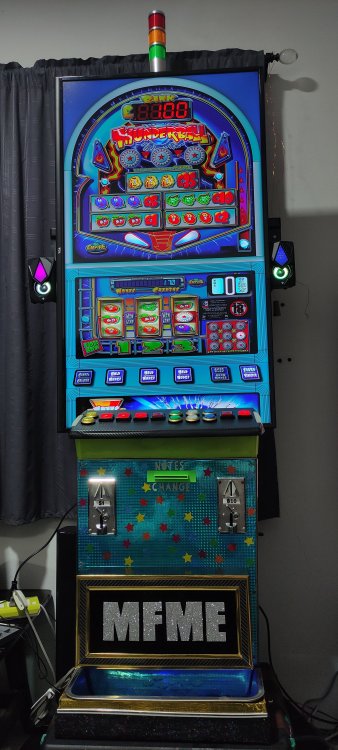
Setting up each layout, requires chopping off any side art work & making the backgrounds black.
I then add blank space to the top of each layout to force it to the bottom of my screen.
For layouts that exceed 2880 in height, I have to set the layout to an editable size, set the width I want, then drag the top of the layout down towards the buttons - only then, can you exceed the 2880 height restriction - by draging the top up past 2880 to the top of the layout and add blank space.
EG:I forgot to add, I have 3 small buttons on the back of my button box for ESC, F3, F6, and a 2.4g mouse pen. Also...Being able to drag the layout past 2880, we can have some 8K layouts in the future:)
-
 1
1
-
-
Have you tried using a couple of relays?
IE:
A 5v relay powered from the Pacdrive to connect a 12v/24v supply to spin the hopper motor.
A 12v relay powered from a 12v supply (the same 12v needed for the opto), to activate the "[" on the ipac. The signal out would then switch the relay. -
1st reply!
-
 1
1
-
-
Well after waiting over 3 months for my consol off Ebay, I ended up with a refund. The seller sent my consol to the wrong country, and kept promising to resend it, but never did.
Now after 8 days, I ended up getting my consol off shopee for 60 quid inc shipping! (256g+ 2 Wireless controllers, TV remote and a free usb hub)
If anyone is interested in the contents of the SD card, here it is:
There are 3 partitions. First partition is not a recognised file format, so is probabley the OS.
-
Tokens = Tiac - > Hopper 2 *1
10p = Tiac - > Hopper 1 *1
Sometimes you have to unplug the Pacdive and reboot MFME to clear a payout problem, if you mess up with the wrong triac settings.
-
Hi Dave.
There are a few diagrams in the cabinet forum, but each build differs depending on what type of coin mech and hopper is being used.
What have you bought so far?
Have you made a design?You could start a thread in the Cabinet Building when you stat building, and we can help you as you go along:)
-
 1
1
-
-
1 hour ago, infection said:
Do we have sound roms For this? Also any pics
Sound Roms came with the layout. No idea about pictures though.
-
 1
1
-
-
-
Hi Guys.
I noticed a few sellers on ali express selling different size touch screen converters (Search for "touch screen converter"), and wondered if anyone on here has ever tried fitting one to there MFME screen? They look like a good way to convert large screens to "touch" on the cheap.
-
Hi guys,
I found Just Cause 3 on steam last week for 88Baht (UK 1.90), and gave it a try. Anyway I have over 40 hours in to it so far, and I am not even half way through the main missions, so I thought it was worth mentioning to anyone like me who never heard of it before, whilst it was still on sale.
If you like GTA5, open world games and blowing shit up with guns, tanks, trucks, helicopter and fighter jets, then do not miss this, especially if you have a decent PC set up. The graphics are not as good as GT5, but the game play (apart from steering road vehicles) is actually better.
BTW, Just Cause 4 which came out ages ago, only has pretty mediocre reviews on youtube, and is not worth getting at its current price.
-
 3
3
-
-
1 hour ago, spa said:
I had to do a serious edit, top glass left, bottom glass right, so side by side.
Did you try Dual Screen Mode? (MFME Preferences)
-
I finished the cosmetics today, so here is the final result. Key switch on the left, selects note change or MFME credit (Key press X(note A), Y(note B) or Z(note C)). The green button, is to initiate the change payout, as you can insert more than 1 note at a time for change.
The key switch on the right is for switching the input signal between the note acceptor, or external source IE:3rd hopper.
-
 1
1
-
 1
1
-
-
Plugged everything in this morning and it all works:)
Turn the key switch to the left, and you can insert notes and get change, or turn the key switch to the right and you can get MFME credit (using the arduino Leonardo set up).
I spent the rest of the day cabinatising everything. Just got the front panel to finish off tomorrow and this part of my prototype experiment is done. Technically I could also add another double pole key switch and use this as a 3rd Hopper payout (via triac to relay) so long as the coins match the way the JY-142 board is set up. The only downside with this board, is that despite there being 2 hopper outputs, there is only 1 pulse input.
-
 3
3
-
-
After the successful 3rd Hopper test (using Triac "X" output), which also included the ability to turn tokens in to cash. IE turn a 4.80 Token win, in to 4 pound coins, and leave the 80p in memory - then adding it to the next token payout. It is now time for the original experiment (Note Changer or Machine Credit).
All the wiring is finished, and everything is ready to be tested tomorrow.
So hopefully, I can turn the key switch anti clockwise, and insert any number of different notes and press the green button for change, or turn the key switch clockwise and get credit on MFME instead (this makes different keypresses using an arduino Leonardo board in MFME depending on the note inserted).
Fingers crossed:)
-
 3
3
-
-
41 minutes ago, Road Hog Mad said:
Interesting experiment, I just thought it would be good to have token pay-outs too as its more authentic.
I agree. This was just a sidetrack experiment for turning tokens payouts in to cash. Unfortunately my new ID#2 Pacdrive now seems to be voltageless (still shows up as Pacdrive #2) which means I will continue on my original quest, IE: Notes to credit (works already with Arduino Leonardo), and notes for change which should work with this JY-142 board.
-
Experiment done!
So I set up everything as mentioned above, and played JPM SYS5 Fireball, (because it is generous on tokens) and needless to say, it took me 52 bleeding squid to get a 4.80 jackpot! + 1 repeat.
Anyway it all works!
I have it set up so that it clocks up the token payouts, and you press a button to collect the pounds. It can be changed to pay out instantly in the settings.
There is provision for 2 hoppers, so you can set up 2 different Triac payouts in MFME to = 2 different coins.
So now we know that using 4 hoppers without an arduino is possible, and converting tokens to Pounds (including memorizing balance) is also possible.
I have an arduino Uno in the post for my next experiment.
-
 2
2
-
-
Unfortunately my last experiment did not work, using Triac->hopper1 & Triac->hopper2 on Pacdrive 1 and Triac-> hopper1 on Pacdrive #2 at the same time. Only one or the other works.
However that still leaves the Triac output, which should be able to power a relay, and that could be used by an arduino, to convert it in to spinning the hopper and counting a coin through the opto. (Experiment coming soon)Unexpected find!
I have just started experimenting with my JY-142 coin changer board, and found out something that may interest you!
You can set it up to take X amount of pulses/switches (Think relay from the token triac output) and pay X amount of coins, and have it keep the balance in memory (shows on a display).In other words you could theoretically set up tokens to payout via triac (#) in Pacdrive settings, and connect the output to a relay, then connect the relay to the pulse/switch input on this board. The board would then wait for 5 token pulses, and payout a pound. For 4.80 it would pay out pound and leave balance for the next payout. I may try this properly later.
-
 1
1
-




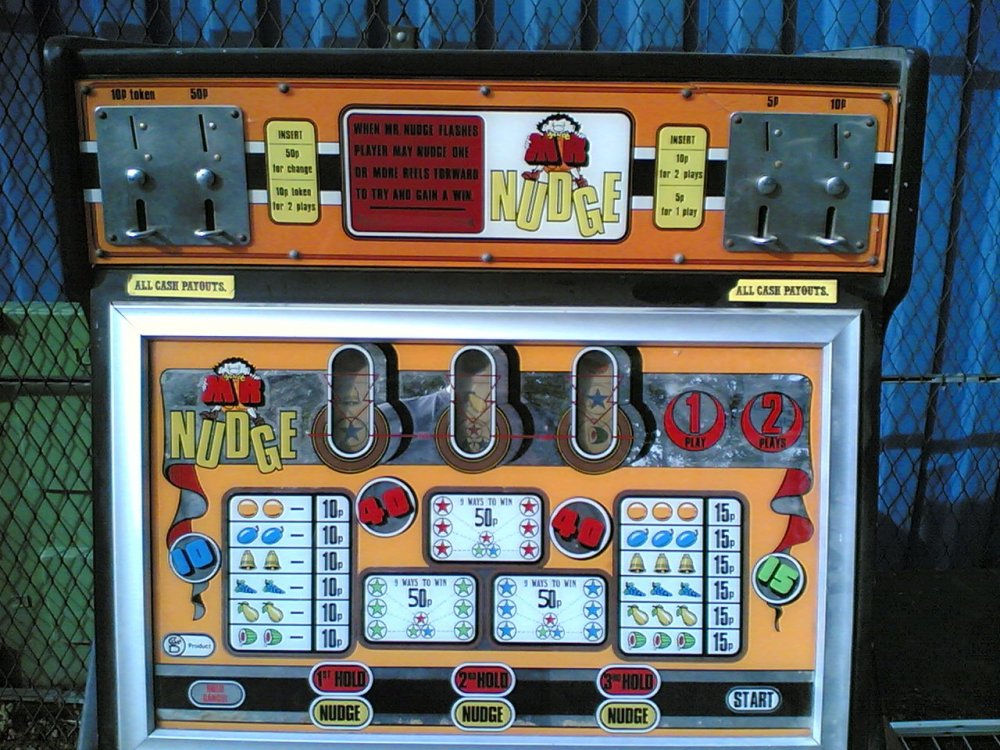
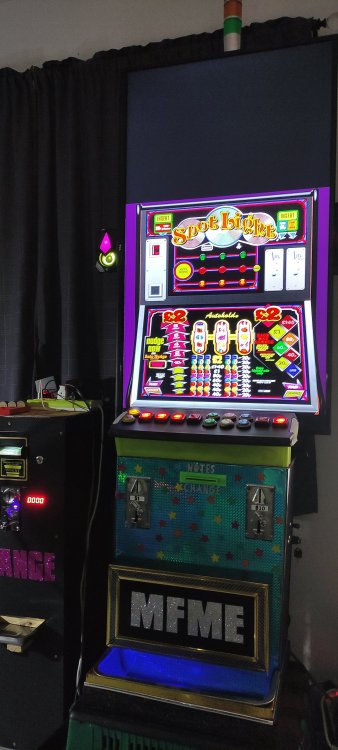
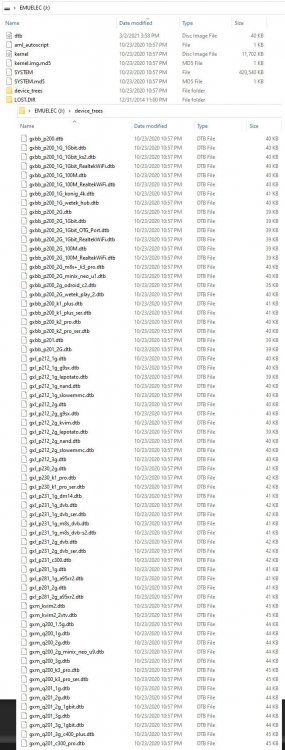

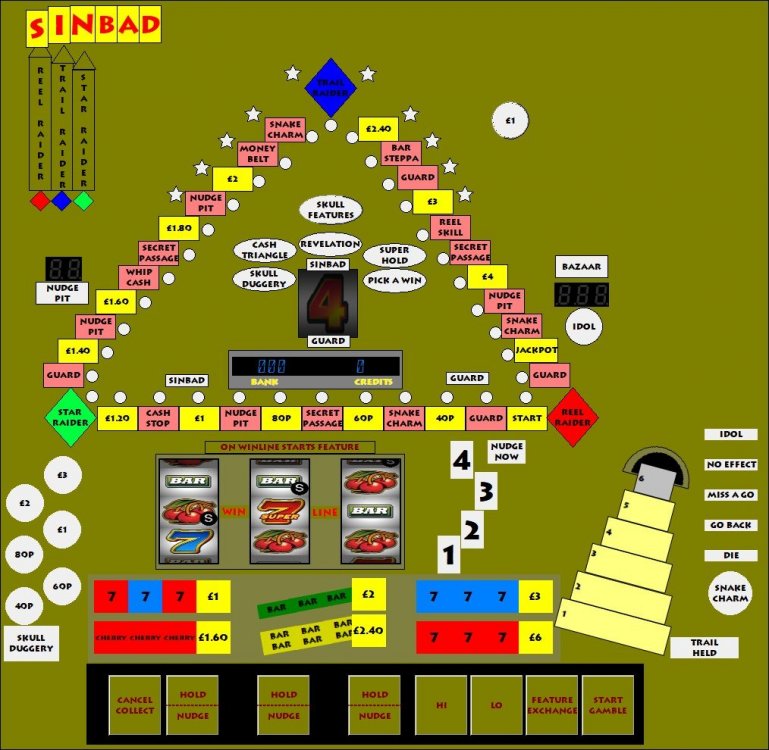
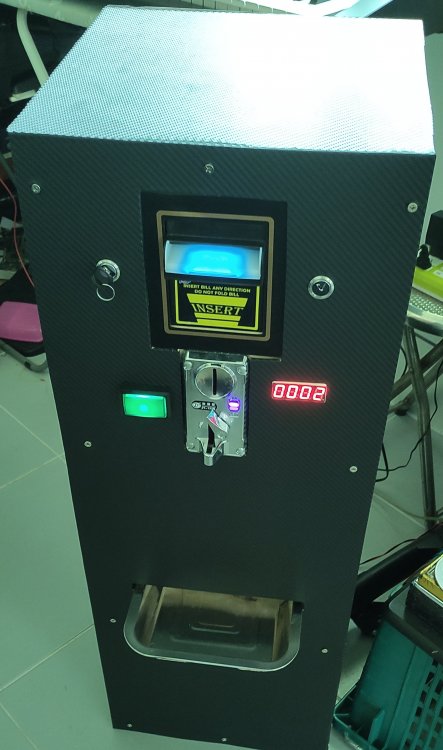
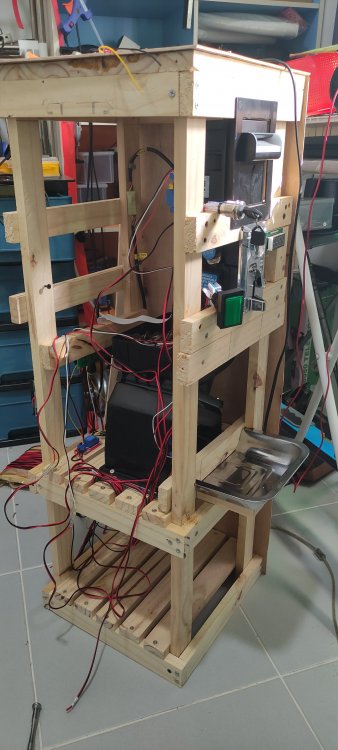
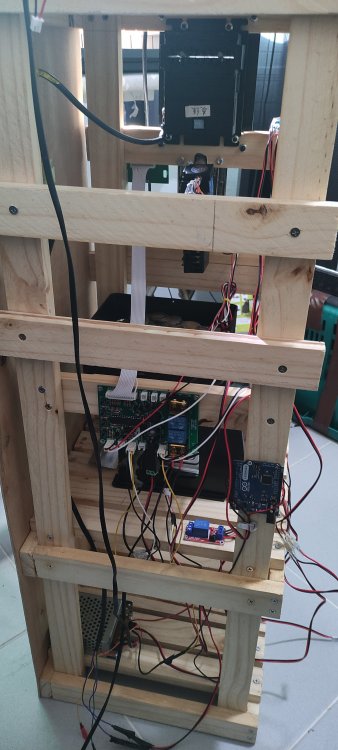
Development Updates
in Arcade Simulator
Posted
I just tried this out on my cab. The shortcuts that are universal work, but the payouts and leds wont work, unless there is a PAcDrive config set up. With most cab set ups being unique, this is going to be a future challenge, unless we are able to load layouts locally, or have a something that can convert a universal set up to our own.